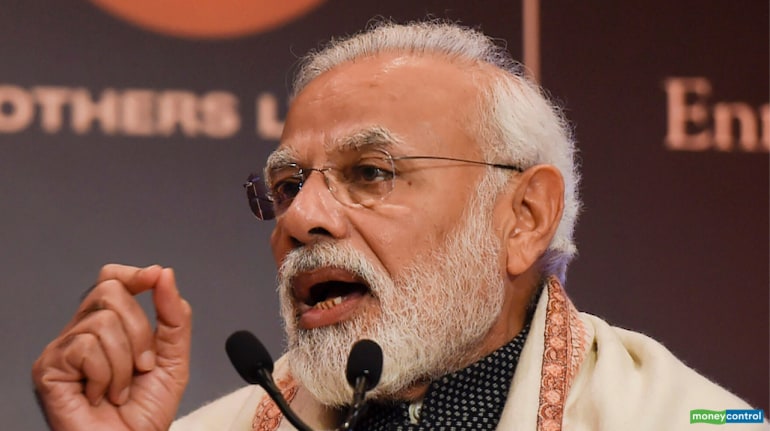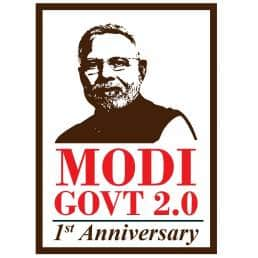
Modi Govt 2.0 | Bold steps with a focus on long-term reforms
The Narendra Modi-led government has enacted several vital reforms and taken long-term policy decisions aimed at restructuring the economy
by Abhinav Prakash SinghAt the end of the first year of Modi 2.0, it is time to look back at the government’s economic performance. Interestingly, in the first year major political decisions have overshadowed the economic decisions. That said, several significant steps were taken to counter the persistent slowdown in the economy and undertake much-need reforms.
One major step was the Taxation Laws (Amendment) Bill, 2019, to replace the Taxation Laws (Amendment) Ordinance. It allows domestic companies to pay 22 percent tax if they are not availing any incentive or exemptions. It also stipulated that manufacturing companies set up after October 1, 2019, will pay 15 percent tax.
The start-ups registered with the Department for Promotion of Industry and Internal Trade (DPIIT) were finally exempted from the much-resented angle tax. The Minimum Alternate Tax (MAT) was reduced from 18 percent to 15 percent, and various concessions were extended on the capital gains. The rationale was to make India an attractive destination for the investment by bringing its tax rates nearer to the international level.
While this reduction was long overdue, concerns were raised regarding the timings as India was amidst a slowdown and government revenues were already under pressure. Mere reduction in tax rates in the face of a weak demand may not in itself spur investment and manufacturing. Also, India is yet to see the expected benefits of this policy change.
The government also launched the Vivaad Se Vishwas scheme to reduce litigation related to direct taxes and resolve pending disputes which account for nearly Rs 9.32 trillion. Similarly, Sabka Vishwas was launched to resolve the pre-GST regime-related disputes.
The path of a significant institutional change was also paved with the introduction of International Financial Services Centres (IFSCs) Authority Bill, 2019, that provides for the creation of a unified financial regulator. The government also took bold steps towards disinvestment of the Bharat Petroleum Corporation Limited, the Container Corporation of India Ltd (Concor) and the Shipping Corporation of India. The decision for stake sale in the LIC was one among the many significant decisions to revive the stalled disinvestment agenda. However, the COVID-19 crisis and falling markets mean that there will be little action in the FY21. The decision to sell a 100 percent stake in Air India was also taken and the government released the Expression of Interest (EOI) to invite bidders in January. The pandemic has hit this plan as well.
In June, the central government extended the PM-KISAN scheme to all farmers instead of just small and marginal farmers. Under the scheme now all farmers are eligible to receive Rs 6000 per year in instalments.

The Union government has continued its reform initiatives and the pandemic has not stopped it. It has recently initiated the ambitious process of reforming and streamlining labour laws under four codes; the process is yet to pass the legislative procedures. Another major decision taken recently was to make the ration cards portable across all the states. The scheme was already launched as a pilot project and will bring much-needed relief to the migrant workers once it is fully implemented.
Another significant achievement was the merger of 10 public sector banks into four to consolidate the public sector banks, tackle NPAs and reduce fragility while ensuring better services to the customers. The issue was languishing for years and the banking sector required this major restructuring. The government also launched the National Infrastructure Pipeline which envisions the investment of more than Rs 110 lakh-crore in the roads, shipping, railways, energy, aviation etc. till 2025 to improve logistics and boost economic growth.
It was, however, only during the COVID-19 crisis that most far-reaching economic decisions were put into action. Modi 2.0 seized the opportunity to implement what is in effect a 1991 moment. Among the policy decisions, the change in the definition of the MSME sector, dismantling of the Essential Commodities Act and the APMCs, higher FDI in defence, a new coal auction policy, a composite exploration-cum-mining-cum-production regime, and reforms in the aviation and energy sectors stand out. Several of these reforms, such as the end of license-permit raj in the agriculture, were languishing for decades.
Over the past year, the government has enacted several vital reforms and taken long-term policy decisions aimed at restructuring the economy. The issue is that almost all of them deal with the supply-side bottlenecks in the economy and do little to tackle the short-term problem of falling aggregate demand, especially after the COVID-19 crisis and lockdown. Supply-side changes sometimes take years to fructify, but the government has adopted a conservative approach due to concerns about the fiscal deficit and credit rating agencies.
Abhinav Prakash Singh is assistant professor, Shri Ram College of Commerce, University of Delhi, Delhi. Views are personal.
Moneycontrol Ready Reckoner
Now that payment deadlines have been relaxed due to COVID-19, the Moneycontrol Ready Reckoner will help keep your date with insurance premiums, tax-saving investments and EMIs, among others.
Download a copy